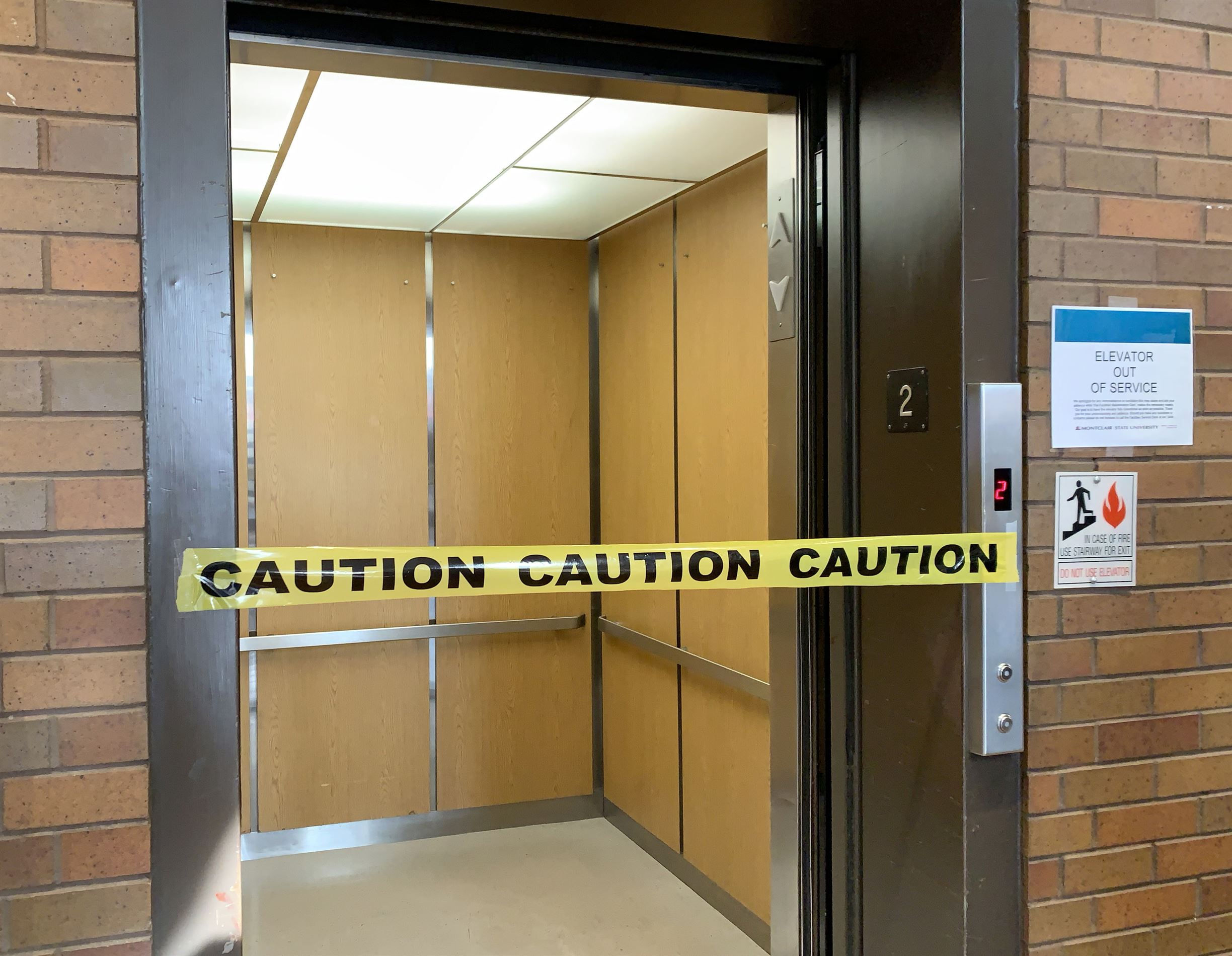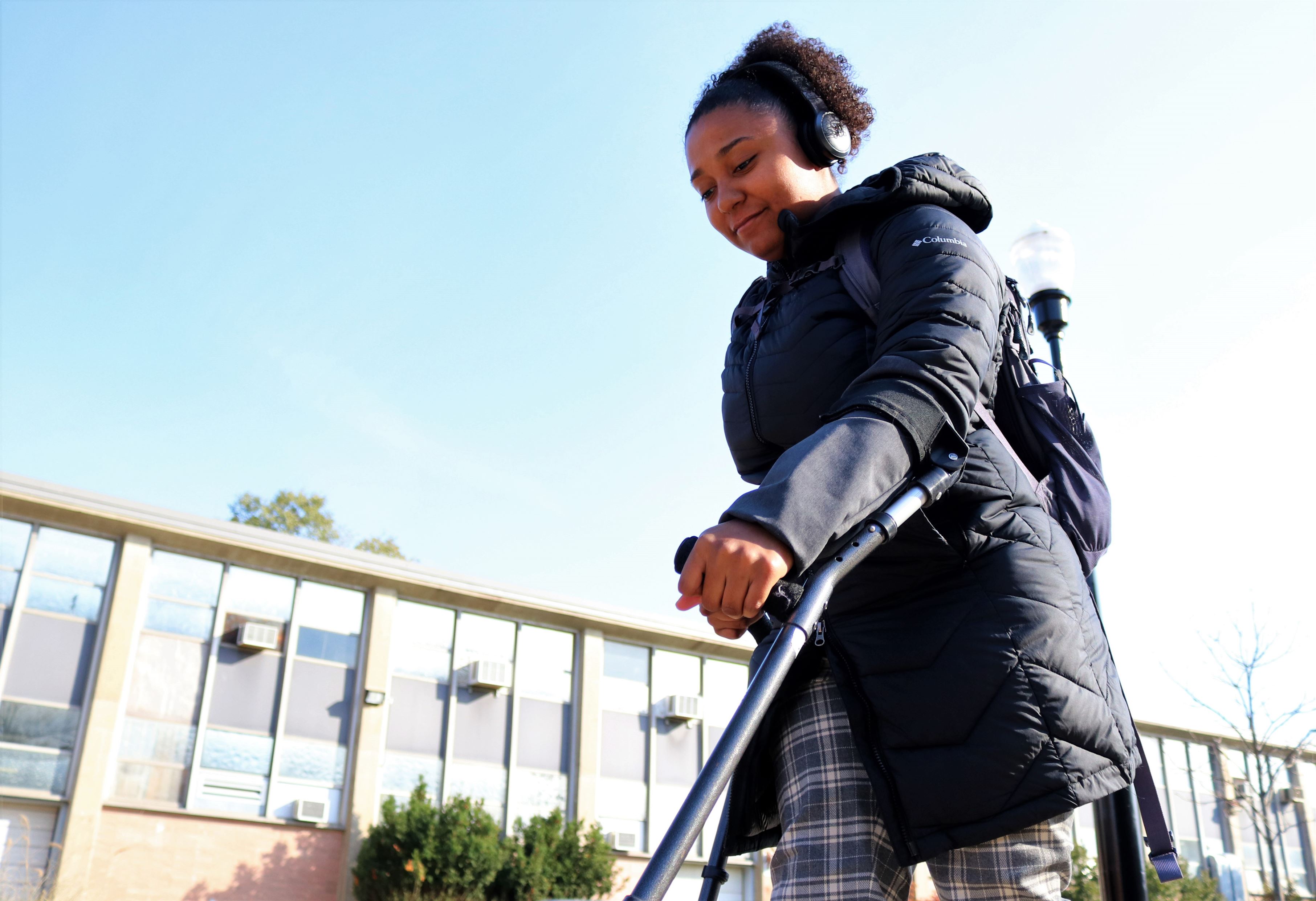The only elevator in the Student Center that offers passage beyond the second floor was broken on Nov. 11. While classes and events carried on as usual, students with disabilities were stranded.
That same day, a monthly discussion group called Grub and Grapple was being held on the fourth floor. Hosted by the Office of Social Justice and Diversity (OSJD), the event was focused on the needs of students with disabilities.
Trinity Corney, a junior journalism major and staff writer for The Montclarion, has cerebral palsy and was unable to reach the event at first.
Corney regularly encounters obstacles on campus, but this time there was no alternative route. In a previous article in The Montclarion, she took note of the irony that an event focused on ableism became inaccessible itself.
“I was upset and surprised that issue occurred right at the same moment as the event,” Corney said.
Corney attempted to speak with employees at the Student Center but was unsure who she could ask for help. Mackenzie Robertson, the managing editor of The Montclarion, took action and notified the OSJD of the issue.
Hamal Strayhorn, director of the OSJD, was able to help Corney by relocating the event, but she was not the only student to have this problem.
“My staff worked with [the Center for Student Involvement] (CSI) to see if they could identify a different location for the event,” Strayhorn said. “There were other students with accessibility issues that wanted to share in the conversation that day, but left before we were able to move. I just wish we could have assisted them as well.”
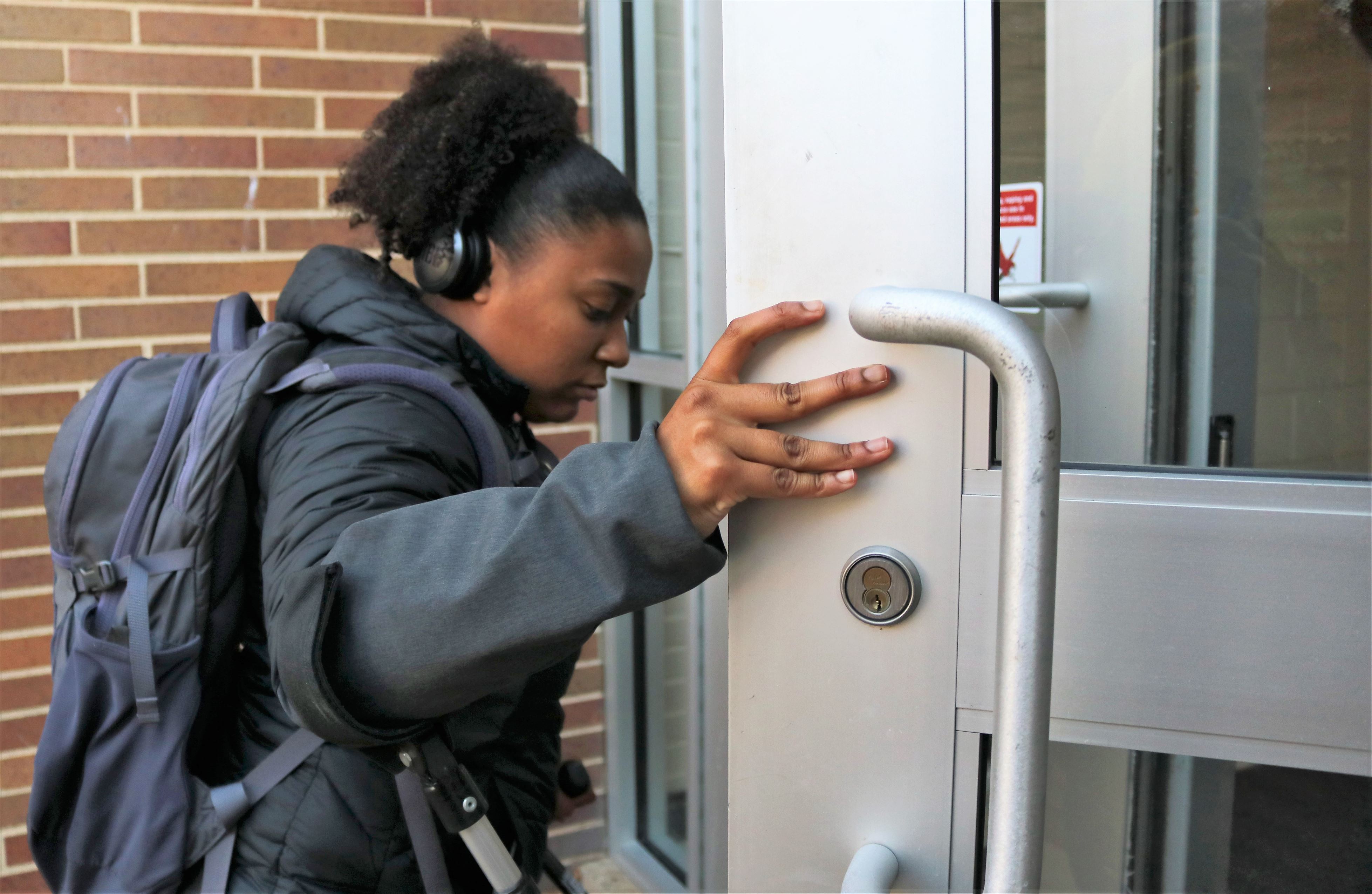
Corney enters Calcia Hall but unfortunately there is no button to automatically open the door.
Sunah Choudhry | The Montclarion
The OSJD is not responsible for physically improving accessibility, but for educating the community. Strayhorn noted that changes are needed, but improvements depend on persons with disabilities to report them.
“I think [Montclair State] makes the necessary changes when [they] are aware,” Strayhorn said. “That’s why it’s important for those who see a need to reach out and report that need.”

When buildings are in disrepair, the administration places responsibility on students to report issues.
Olivia Kearns | The Montclarion
Karen Pennington, vice president for student development and campus life, shared that there were other complications that prevented the elevator from being in working order.
“Our elevator was out Monday and part of Tuesday. That is one of the old ones, and there is only one company in New Jersey that can fix that elevator,” Pennington said. “Vice President Connolly was aware of the problem with that one. It was the holiday and the company was not open on Monday because they were off for the holiday.”
Student Government Association (SGA) President Jherel Saunders-Dittimus, a senior communication studies major, echoes the same points about the need for feedback from people with disabilities.
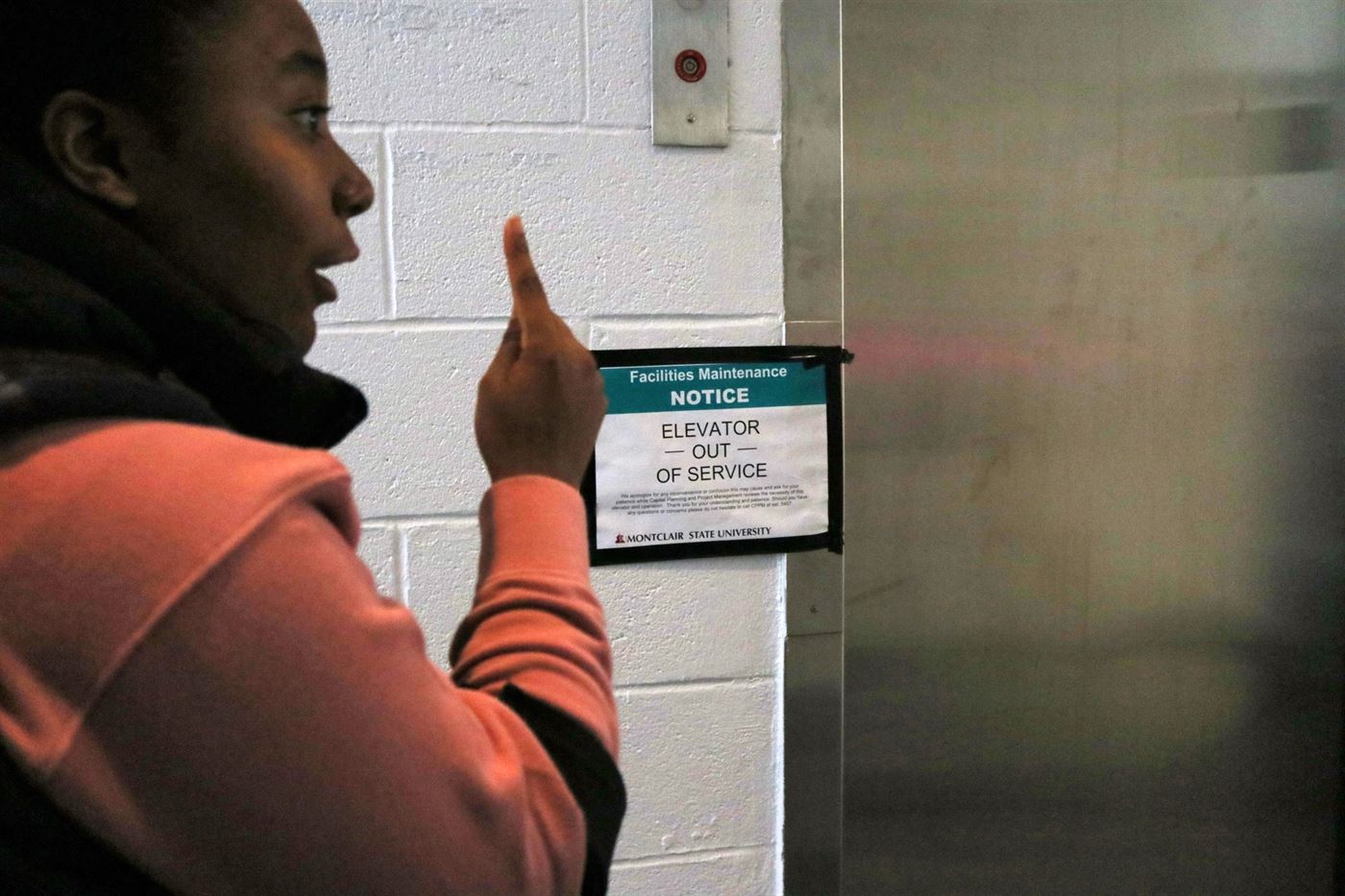
Corney recalls the struggles she had when one of the elevators was not working in the previous week. She says there was only one elevator working which forced her to walk up thirty steps.
Sunah Choudhry | The Montclarion
“The campus administrators are trying the best they can to get things fixed as we move on in the semester,” Saunders-Dittimus said. “The biggest problem is students will not report when something is broken or not working.”
According to the administration at Montclair State, it is the responsibility of people with disabilities to report each time they are blocked from attending courses or events in order for progress to be made.

The CELS building has a handicap accessible automatic door opener button but Green shared that it frequently malfunctions.
Olivia Kearns | The Montclarion
Gary Green, a sophomore psychology major, has been using a wheelchair for 17 years due to a spinal cord injury. He has noticed that some mechanisms need constant repair.
“I had a little issue with the [Center for Environmental and Life Sciences] (CELS) building,” Green said. “When you hit the button to get in for the handicap accessible doors, sometimes it doesn’t work.”
Stephen Miganeli, a junior journalism major, has cerebral palsy and is frustrated by the lack of information readily available to find accessible routes on campus.
“It’s annoying that every time I have to make a new schedule, I have to find the exact place for each of the rooms to see if I can even be in the class,” Mignaneli said.

Corney assists Amy Albin to the disability van while on her way to class in front of Calcia Hall out of choice.
Sunah Choudhry | The Montclarion
As for improvements, Mignaneli suggested better signage and more transparency about accessible locations.
“Make it easier to know the entrances of each building that are accessible for [people with a] disability,” Mignaneli said. “Almost all the buildings don’t have an easy way to know if they have an [automatic door opener] button or not.”
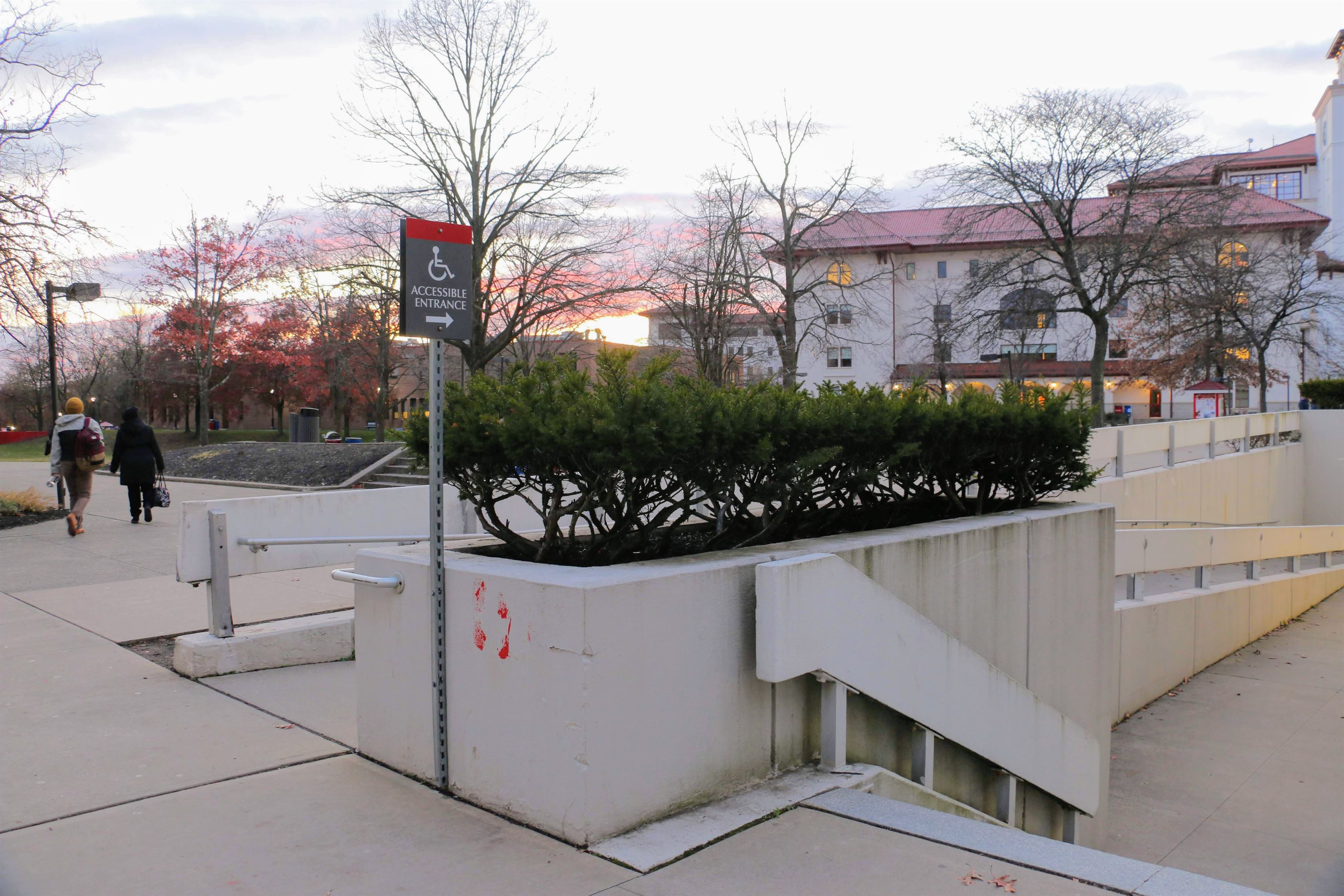
Students with disabilities feel that there is not enough signage on campus to help them find accessible routes.
Olivia Kearns | The Montclarion
Section 216.6 of the ADA states that entrances that comply should be identified by the International Symbol of Accessibility, and directional signs should indicate the nearest accessible entrance to minimize backtracking.
Based on the difficulty students are experiencing to locate entrances, they feel as if this policy is not being enforced. Without this information readily available for people with disabilities, they have to search for accessible entrances themselves.
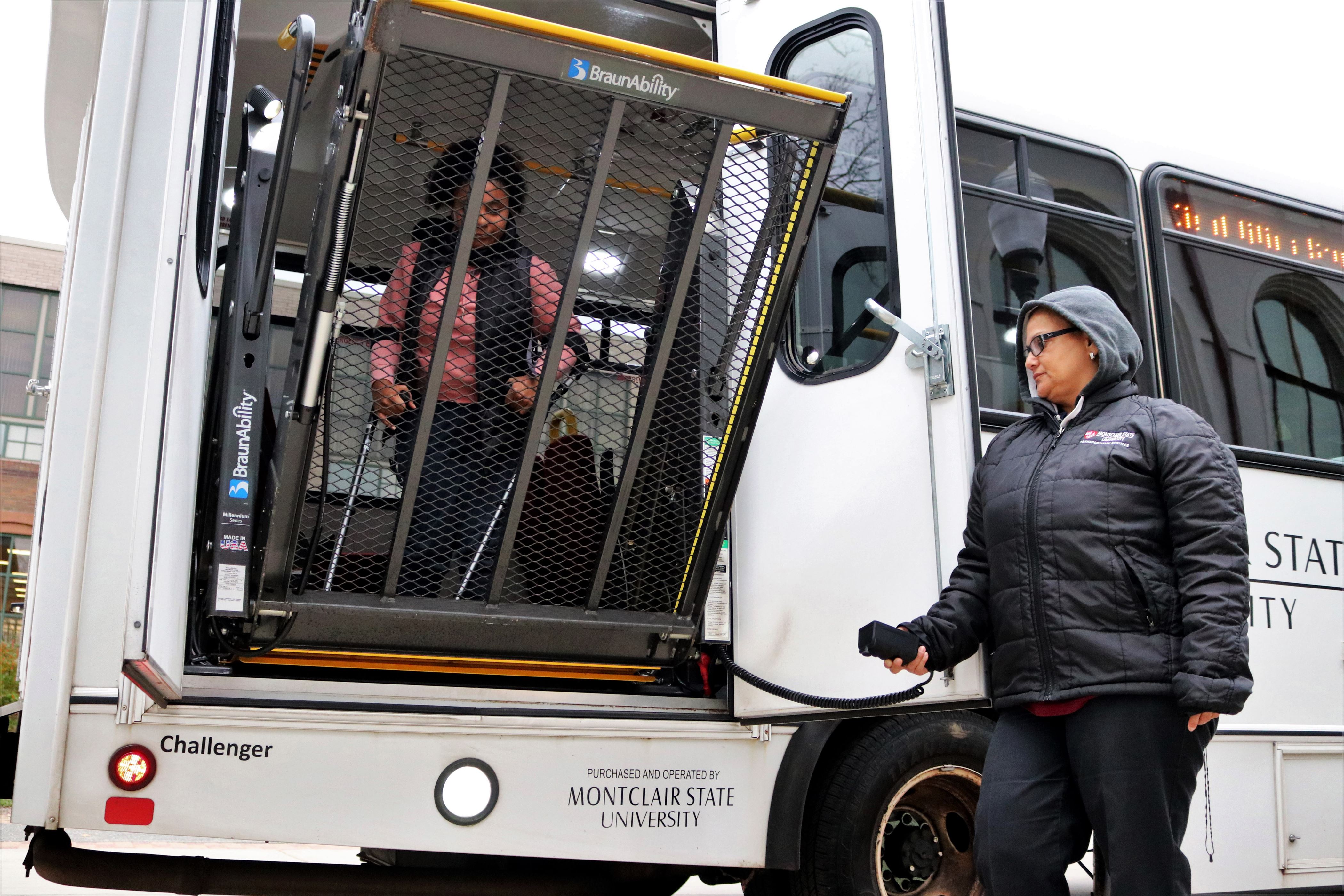
Corney utilizes the Persons with Disabilities (PWD) shuttle to get to the School of Communication and Media (SCM).
Sunah Choudhry | The Montclarion
Susan Baglieri, associate professor and co-coordinator of the Increasing Access to College project (IAC project), shared her perspective on improvements that could be made to further support accessibility on campus.
“Rather than just give a list of things that could be changed, it would be a much more meaningful effort to establish a center to be a sustained collective dedicated to ongoing attention to creating access and justice on campus,” Baglieri said.
The Disability Resource Center offers assistance for students with disabilities. Their mission statement emphasizes that: “accommodating students with disabilities is not only the legal responsibility of [Montclair State], but also an ethical responsibility.”
If you have encountered obstacles regarding accessibility on campus, please email us at montclarionmanaging@gmail.com

